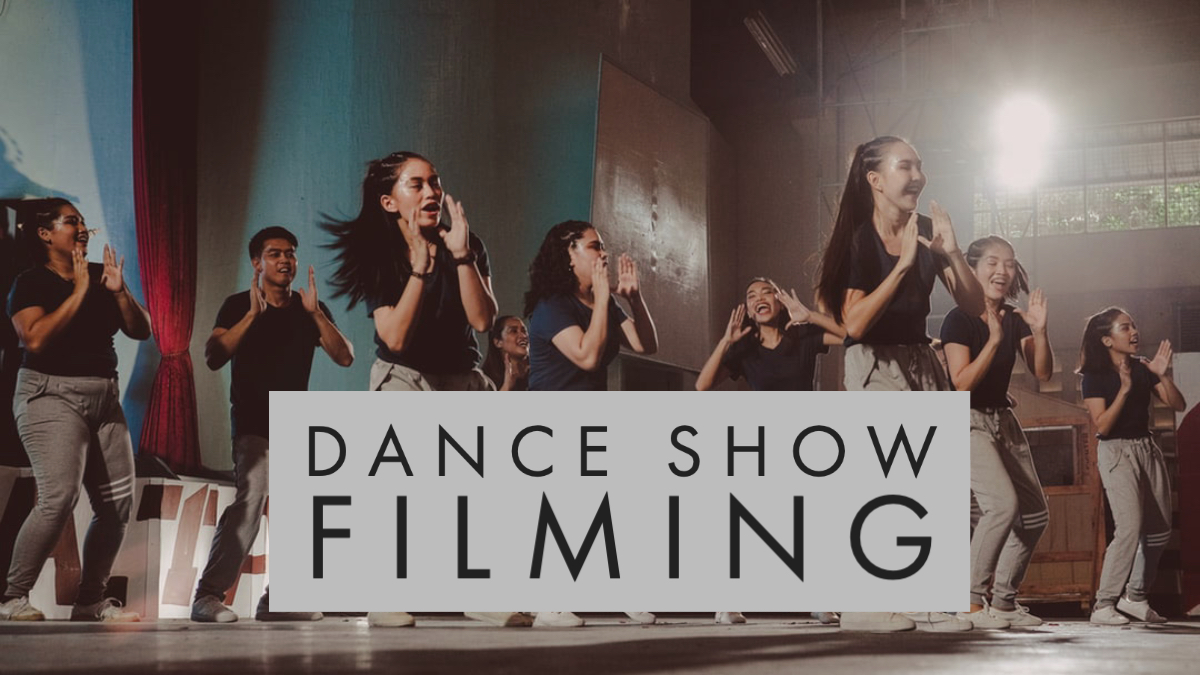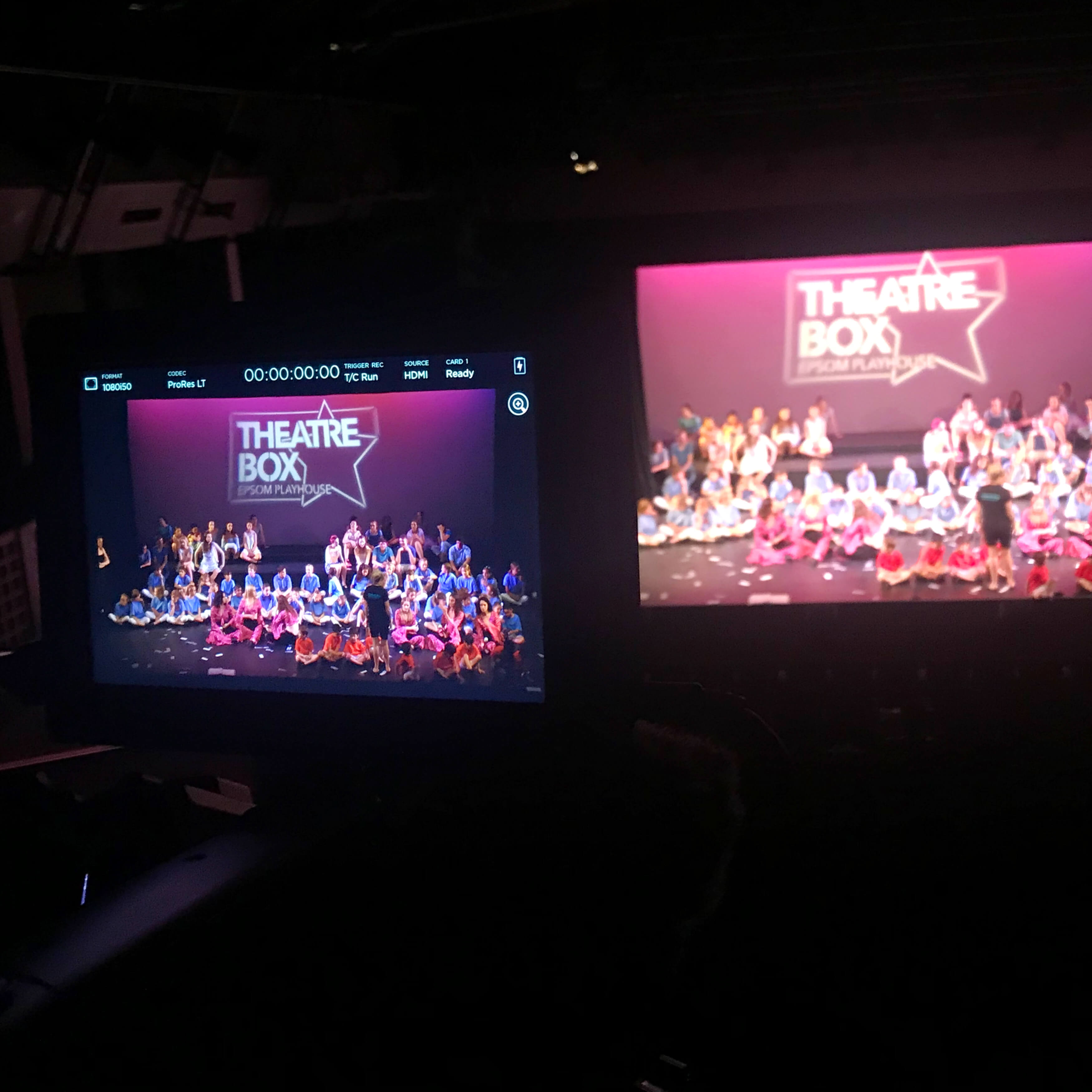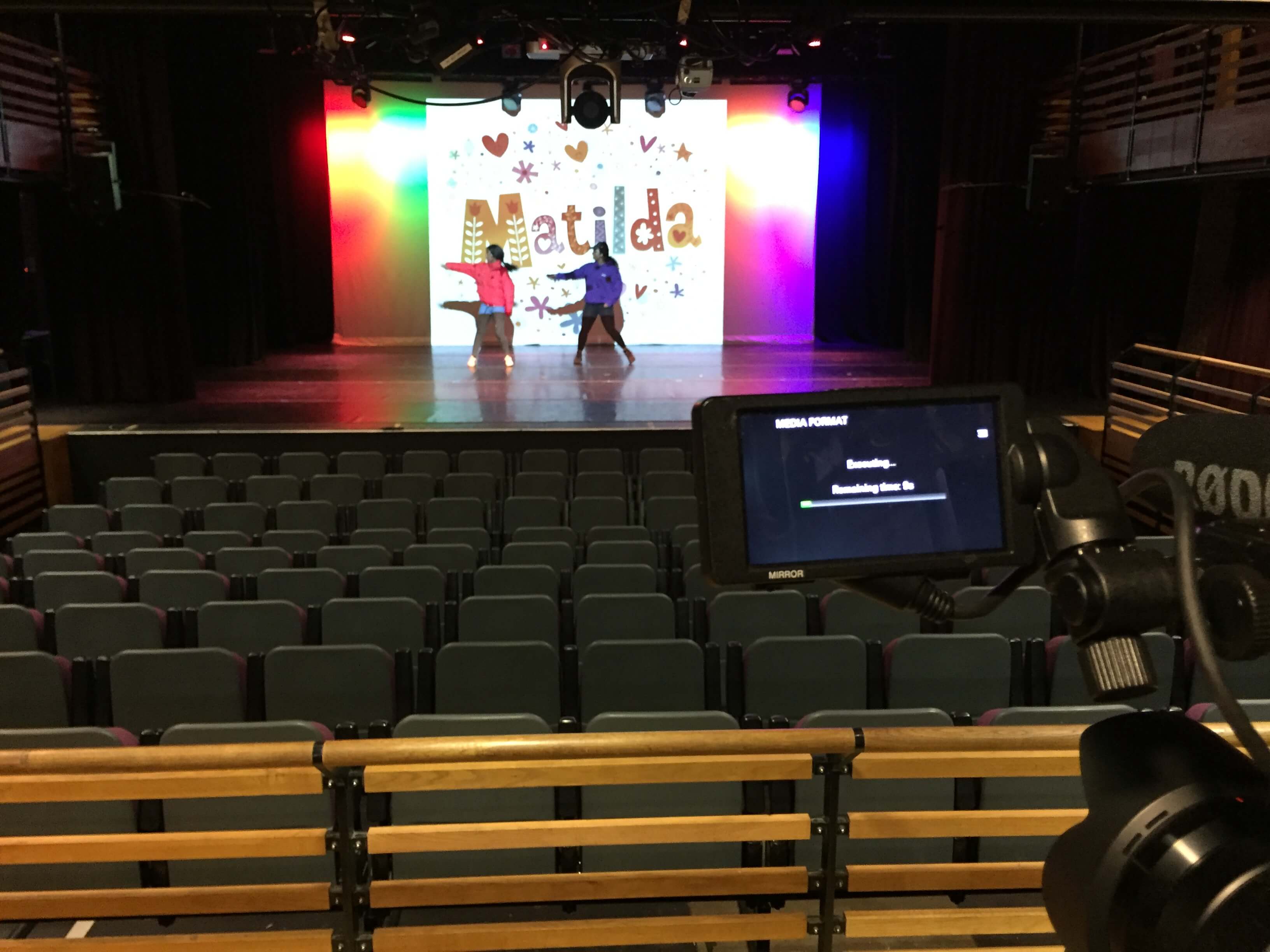September 2021
How to Professionally film a Dance Show
08/09/21 08:58 Filed in: How to

How To Professionally film -
1) A Dance School Show
Whilst there are many similarities to filming all types of stage production, there are several things to consider when filming a dance show which are unique to dance. These include the rapid change of lighting environments and colour, pace of filming changes between acts and audio requirements.

How many cameras and how to set these up
With dance its important to show the choreography of each piece, you don’t want too many close up shots if they make you miss what is happening in the dance act. This is why I advise to not be too ambitious when filming a dance show, if you are only filming with one camera it is probably best to leave that camera covering the entire stage area throughout.
But this is how to professionally film a dance show with multiple cameras and 2 operators
- Setup a wide camera covering the stage area. This camera angle will be highly used and should be zoomed in or out depending on the size of the group within each section. You want to see the entire troop, however if you can be as tight in as the limit of the act this always looks better. One way of doing this is to film at a higher resolution than your final output and crop in during the editing process.
- Operated Camera Number 1. This camera operator has the role of covering the main part of the dance act, this includes anything that merges to the centre of the stage. The picture should be as wide as it takes to film from head to toe comfortably within the frame.
- Operated Camera Number 2. This camera takes up a position complementing operated camera number 1. We have found this to be best right at the front of the stage area, giving a real front row seat, angle and perspective. Depending on the stage layout, where people go on and off and if they are visible, an angle to one side can also work well. When the groups are smaller or go centre stage this operator with zoom in tighter.
- A fourth camera is a luxury and will provide an occasional shot to insert. We suggest either having a static nearer the front (if you can have an operator at the front). Or to use a fourth camera as a centre stage crop angle.
The main thing is to have good communication and understanding between both camera operators, they should know who follows stage left and stage right, also when the action is centre stage one should be tighter than the other.
Lighting conditions and pre filming checks

With modern colour changing led lights, lighting conditions can be easily changed between songs and whilst this is great for a live audience it can lead to complications with camera sensors. Flickering can occur with certain colours and if not setup correctly cameras can try to auto compensate for colour.
The first thing to do is to make sure all your cameras are set to manual white balance, ask the person in charge of the lighting desk to give you the main colour used throughout the show and set all your cameras manually to this colour. Then ask them to run through all the different lighting environments for you to establish if there are any issues with colour or if the shutter speed needs to e changed to compensate for flicker. The last thing to check will be the gain or ISO level flexibility to make sure you can properly expose your image under each lighting environment.
What you will often find is you may need to change your gain between a spot lighted scene and a blue scene to compensate for the harsh difference in lighting.
Pace of song and dance
A dance made up of younger children will give you the opportunity to capture higher shots of each child, as they are often slower paced. However during a fast paced act, you won’t have the opportunity to use too many tight shots, it is often best to set cameras to a more static mode and to cut between them as camera movement will just be distracting during these songs.
Sound capture and atmosphere
The relatively easy bit for dance productions is sound. It is best to take a music feed direct from the sound desk into either a recorder or your main operated camera to e monitored. Audio levels can often dramatically changed unless they have been balanced properly beforehand. Having someone on camera to up and down these appropriately can help. You may also want to capture an ambient microphone for tap dance and crowd reaction.
A post dubbed dance show often misses the atmosphere, however this is an option during certain songs if the live sound on the day isn’t perfect.
To have your Dance Show Filming done professionally contact us today.